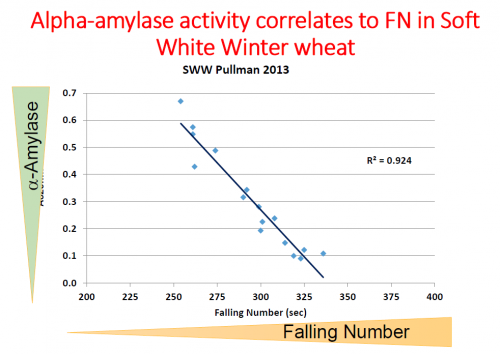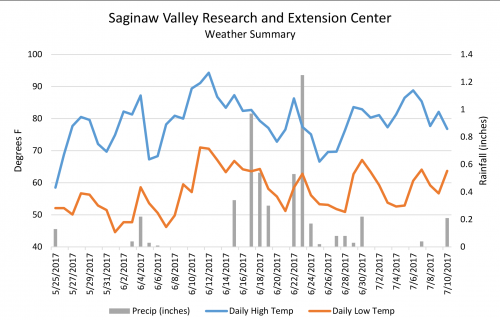What causes low, falling numbers in wheat?
Some early planted wheat is testing low for falling numbers. New research could explain why.
When wheat seeds break dormancy and begin to sprout in the head prior to harvest, quality of the seed can degrade quickly. When sprouting occurs, alpha amylase enzyme begins to break down the long chains of starch into simple sugars. This impacts the quality of bread, cookies and crackers made from sprouted wheat. The amount of alpha amylase enzyme fluctuates naturally, as the seed develops and matures.
Falling numbers is a test that helps identify the structural integrity of the starch chains. To conduct the test, grind the grain into meal, add water, mix with a stirrer and add heat for 60 seconds. The falling number is the number of seconds it takes for the stirrer to fall to the bottom of the test tube. The longer it takes the stirrer to fall, the higher the quality of starch (longer chains).
If the stirrer falls quickly, that is an indicator alpha amylase enzyme may be at high enough levels to start the starch degradation process for seed germination. In fact, the falling number of a sample is very closely related (r2=0.924) to the concentration of alpha amylase (Figure 1).

Figure 1. Relationship of alpha amylase to falling numbers. Source: "Causes of low falling numbers in wheat,” Camille Steber, USDA-ARS, Washington State University.
Late maturity alpha amylase
Late maturity alpha amylase is a developmental defect that occurs as the embryo in each seed matures and is triggered by “cold shock.” Cold shock can be described as a sudden decrease in overnight temperature. The degree of change in temperature that can cause late maturity alpha amylase is not yet known. Varieties with lower ratios of amylose to amylopectin tend to be at higher risk for late maturity alpha amylase and pre-harvest sprouting. Rain and high humidity after wheat kernels reach maturity can cause sprouting. This study suggests temperature can also play a role in triggering a low, falling number test.
Wetting events at high temperatures usually are not a problem. However, a rain event after or during a sudden drop in temperature can stimulate the seed to produce alpha amylase enzyme (late maturity alpha amylase), which triggers germination of the seed. Varieties are variable in the response to cold shock and expression of late maturity alpha amylase. In the future, we may be able to rate varieties for risk of late maturity alpha amylase.
Data from the Saginaw Valley Research and Extension Center (Figure 2) reveals a likely cold shock preceded by rainfall that could have triggered a late maturity alpha amylase event (June 21, 2017). This could explain why some early harvest wheat samples have been testing low for falling number.
More work needs to be done in this area to better understand how temperature fluctuations impact wheat development, and perhaps in the future Michigan State University Extension can make recommendations for varieties that have a lower risk of a late maturity alpha amylase event.

Figure 2. Selected weather data from the Saginaw Valley Research and Extension Center. Data downloaded from MSU Enviroweather.
For more information, see the following articles from Camille Steber, Washington State University.



 Print
Print Email
Email